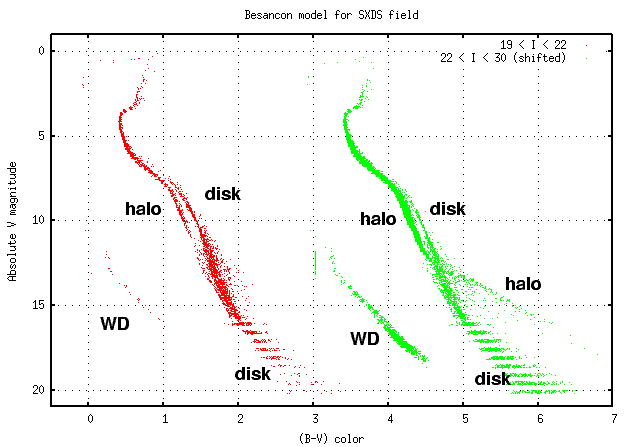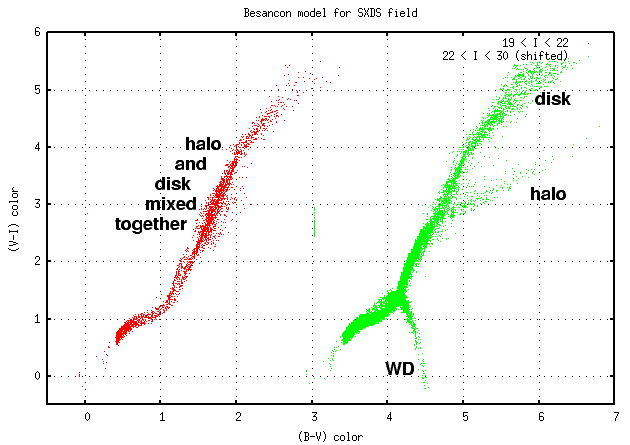
For earlier reports in this series, see
I used the Besancon model for the Milky Way, available on-line at
You can read the simulated catalog of stars created by this web site, but be careful: it is a large file, about 10 MBytes.
Here are a few quick items I learned from examining this simulated catalog. The HR diagram (using absolute magnitude on the y-axis) for the field shows several populations. I will split the stars into two groups: those which have apparent I-band magnitudes between (19 < I < 22), which are similar to those I used to define the stellar locus; and stars with apparent I-band magnitudes (22 < I < 30), which are similar to those we may classify using the stellar locus.

In the figure above, you can see that the main sequence splits into two tracks. In the middle of the main sequence, where (1 < B-V < 1.5), the metal-poor halo stars lie to the left of the metal-rich disk stars. However, at the bottom of the main sequence, the metal-poor halo stars lie in a sharp spike which runs almost horizontally to the right. The least luminous stars on the main sequence are metal-rich disk stars, which fan out in a wide band around absolute magnitude Mv = 20.
We can also look at a color-color diagram of these simulated stars. I choose (B-V) and (V-I) as the colors; they are not an exact match to the colors I used to study the SXDS, but they are close enough. Once again, I'll separate the simulation stars into two groups based on their apparent I-band magnitude.

In this diagram, we see that the halo and disk stars are all mixed together among the "bright" set. Since I used this "bright" set to define the stellar locus, the locus will work well to identify both disk and halo stars in this range.
However, the "faint" set of stars shows several features which will leave the defined stellar locus. First, the low-luminosity, cool halo stars break out in a spike to the right. Second, the white dwarfs fall far off the locus at the bottom. Also, note that the "faint" subset contains some disk stars which are much redder than those in the "bright" set; that means that the defined locus does not extend far enough into the red.
So, if we use the defined locus to classify stars, it will fail in several cases: